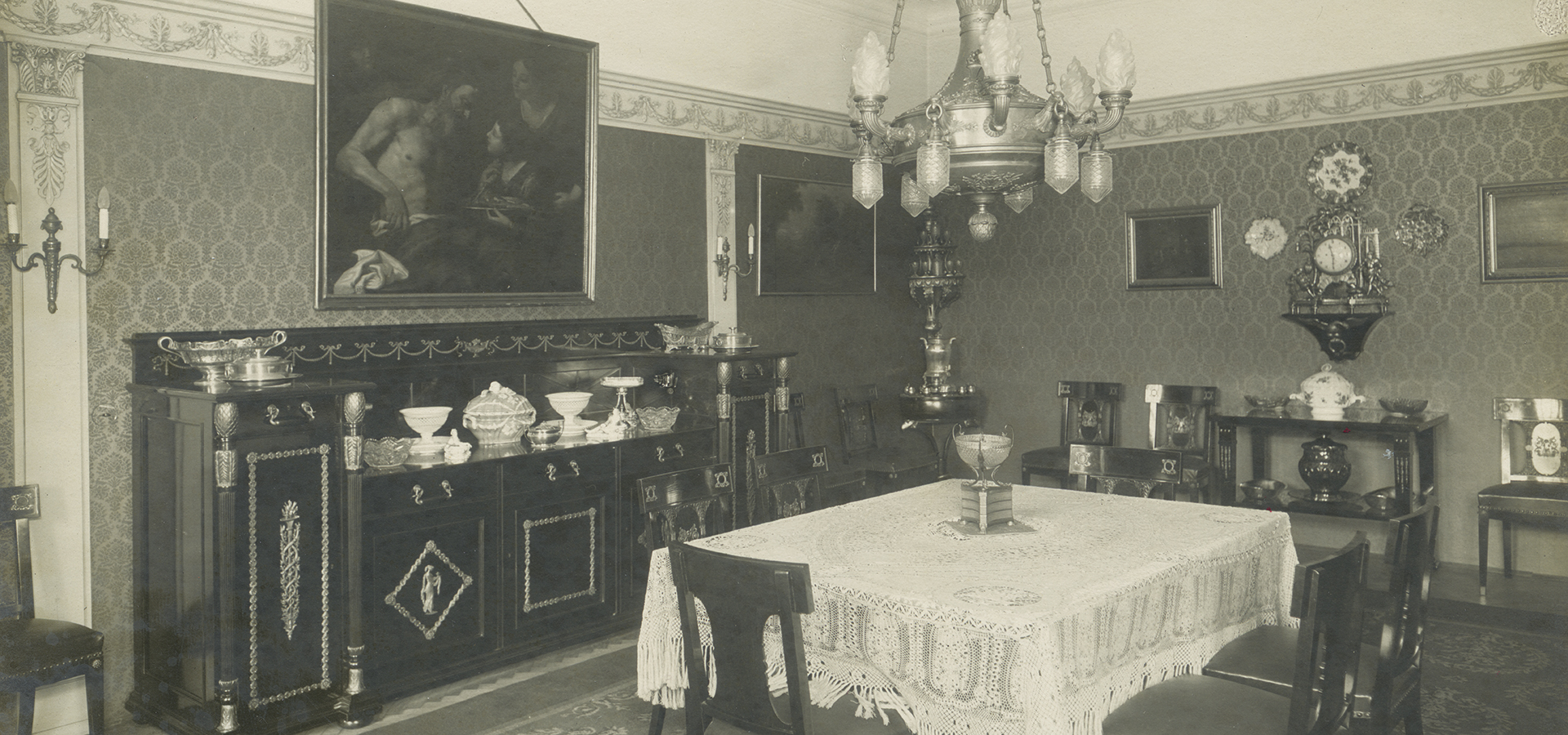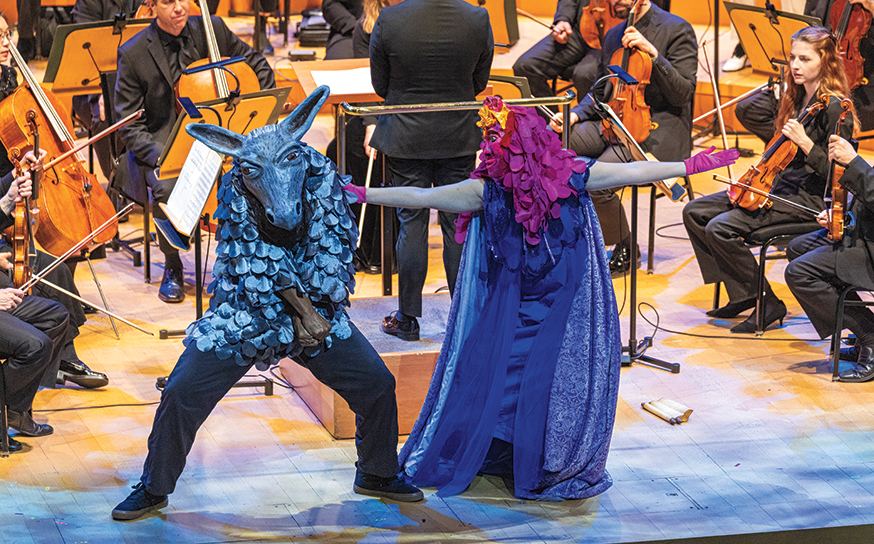Brno, Czechoslovakia, during the Nazi occupation (1939–45) and Los Angeles, California, 2023, are two cities separated by geography and time that would seem to have no apparent connection.
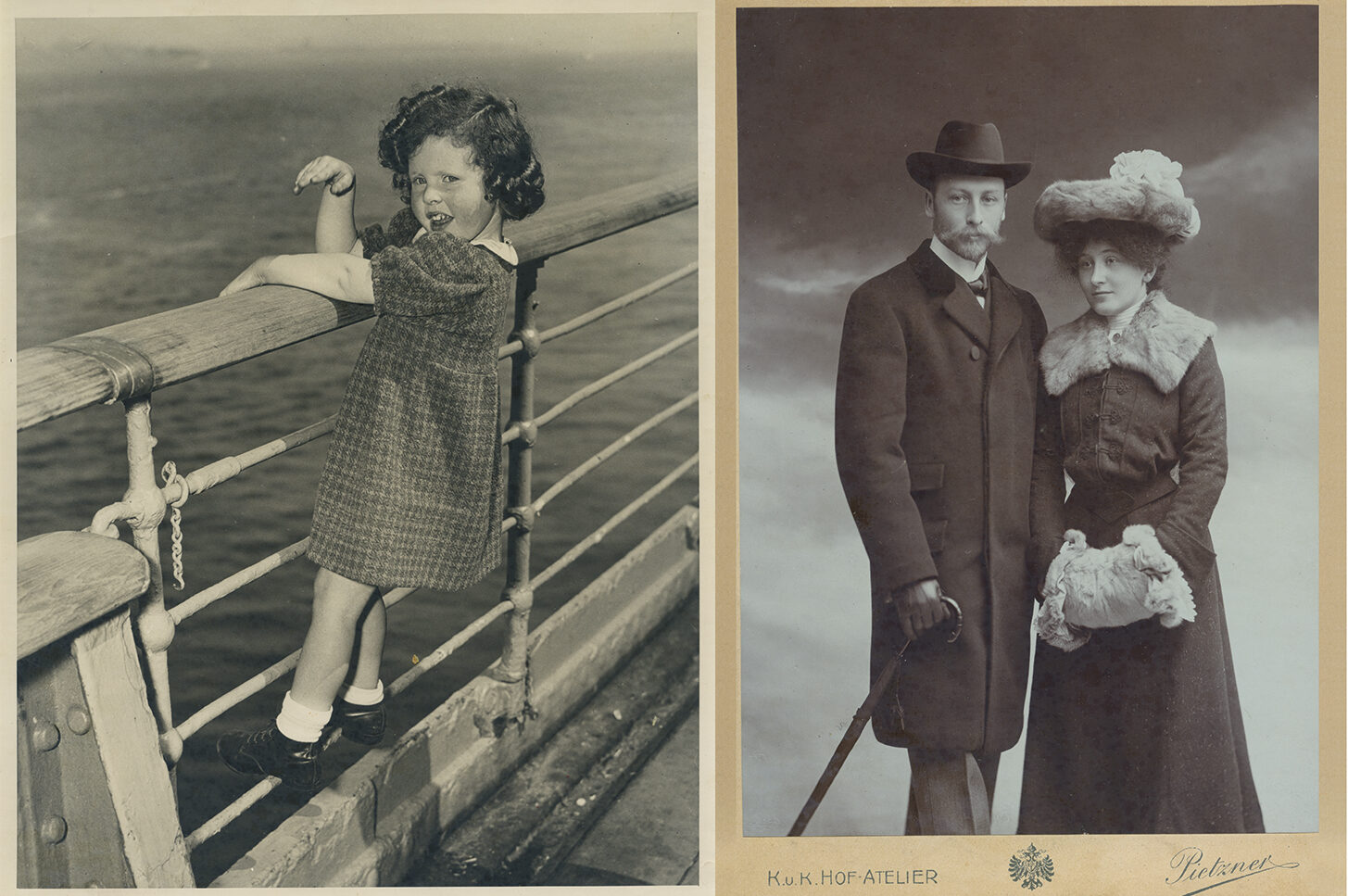
Liz Schenk (left) arrived in the U.S. by boat in 1938. Johann and Lisbeth Bloch, the original owners of the painting (right).
But the connection is deep and real and reflected in the story of three generations of women representing one LA family who embarked on an 82-year journey to recover a painting stolen from the family by the Nazi Party during the Holocaust. The 17th-century painting is now on display in Skirball Cultural Center’s exhibition RECLAIMED: A Family Painting, on view through March 3.
The painting—Isaac Blessing Jacob by German Baroque artist Johann Carl Loth—hangs on a wall, but it’s not just a picture in a frame. The gallery surrounding the painting has been transformed to replicate the elegant dining room where the painting held a place of honor in the Brno home of Johann and Lisbeth Bloch. The Blochs were one of countless Jewish families whose art and other valuable possessions were looted by the Nazis. In addition to the painting, the exhibit includes such historic and family memorabilia as clothing, letters, and photos, along with other works of art and antiques.
Exhibition curator Alissa Schapiro, Skirball associate curator and collections specialist, says placing the painting in the home setting helps the exhibition resonate for visitors in the face of a rise anti-Semitism in the U.S. in reaction to the Israel-Hamas war.
“We opened on October 19, a couple of weeks after the largest massacre of Jews since the Holocaust on October 7,” Alissa says. “Seeing how anti-Semitism fractured and destroyed this family in so many ways, then (seeing) their ability to regain something, provides a little sense of fullness, a little sense of victory at the end. You can’t get the people back, but you can get back the things that the people you loved once loved.”
Adds Alissa, “What we really hope is that other family members of Holocaust victims or survivors might want to undertake this challenging, laborious and oftentimes painful process of getting back some of the things that that were once important to them and to their families.”
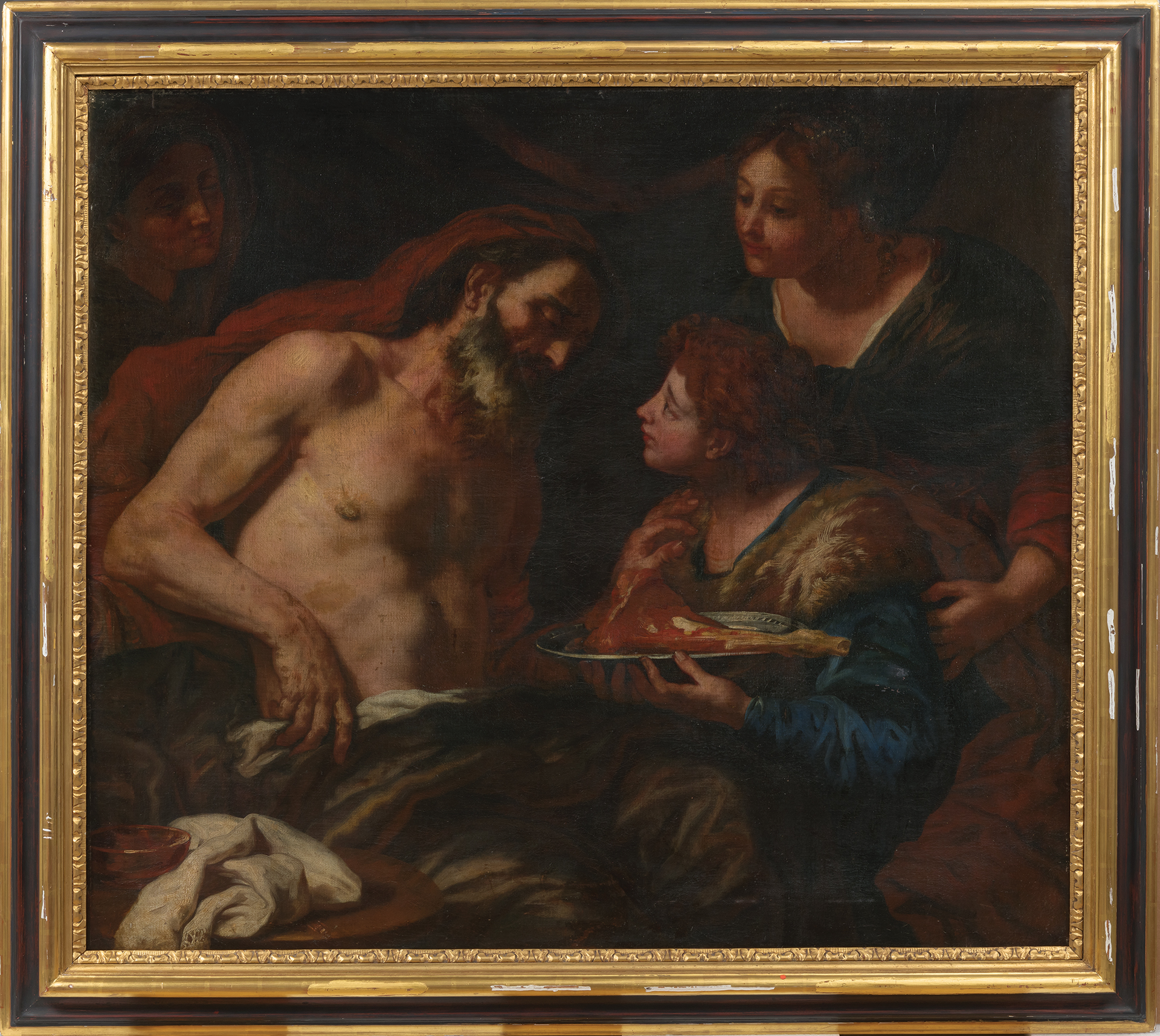
In the Bloch family, much of the credit for starting the process belongs to Johann and Lisbeth’s daughter Hedy. Hedy had married a Catholic engineer named Leo Schenk. (She later changed the spelling to Shenk, and divorced Leo in 1947.) Hedy and her daughter, Liz, fled to the United States in 1938, settling in LA. Lisbeth had died in a car crash in 1928. Johann, a successful businessman, died shortly after the family was evicted from their home during the Nazi occupation.
Fortunately, Hedy managed to collect professional photographs of the Bloch home that included the painting. These were used later as proof of ownership when she began her mission to reclaim it. Hedy was joined in pursuit of the painting by Liz (now Liz Goldman) and Liz’s daughter, Cheryl Bernstein, who grew up in Brentwood and now resides in Santa Clarita with her husband.
Some Angelenos may be familiar with the restitution case of the late Maria Altmann, a Jewish refugee from Austria who lived in Cheviot Hills and led a successful legal campaign to reclaim five family-owned paintings by renowned artist Gustav Klimt stolen by the Nazis. The most famous of those paintings, the 1907 Portrait of Adele Bloch-Bauer, was sold to a New York gallery for a reported $135 million. Besides sharing the common Bloch name (no relation), Cheryl says Altmann’s high-profile, big-money case always leads to pointed questions about the monetary value of Isaac Blessing Jacob.
For Cheryl and Liz, now 87, bringing Isaac Blessing Jacob to LA is not so much about the painting, or money, but about their family and three generations of strong, determined women.
“The first thing that people ask me—or think, but don’t have the nerve to ask—is what is the painting worth. We are not talking a Klimt here, right?” Cheryl says with a laugh. “I can say unequivocally that we spent more trying to get the painting back than the painting is worth. You’re talking 82 years of attorneys, claims and time.”
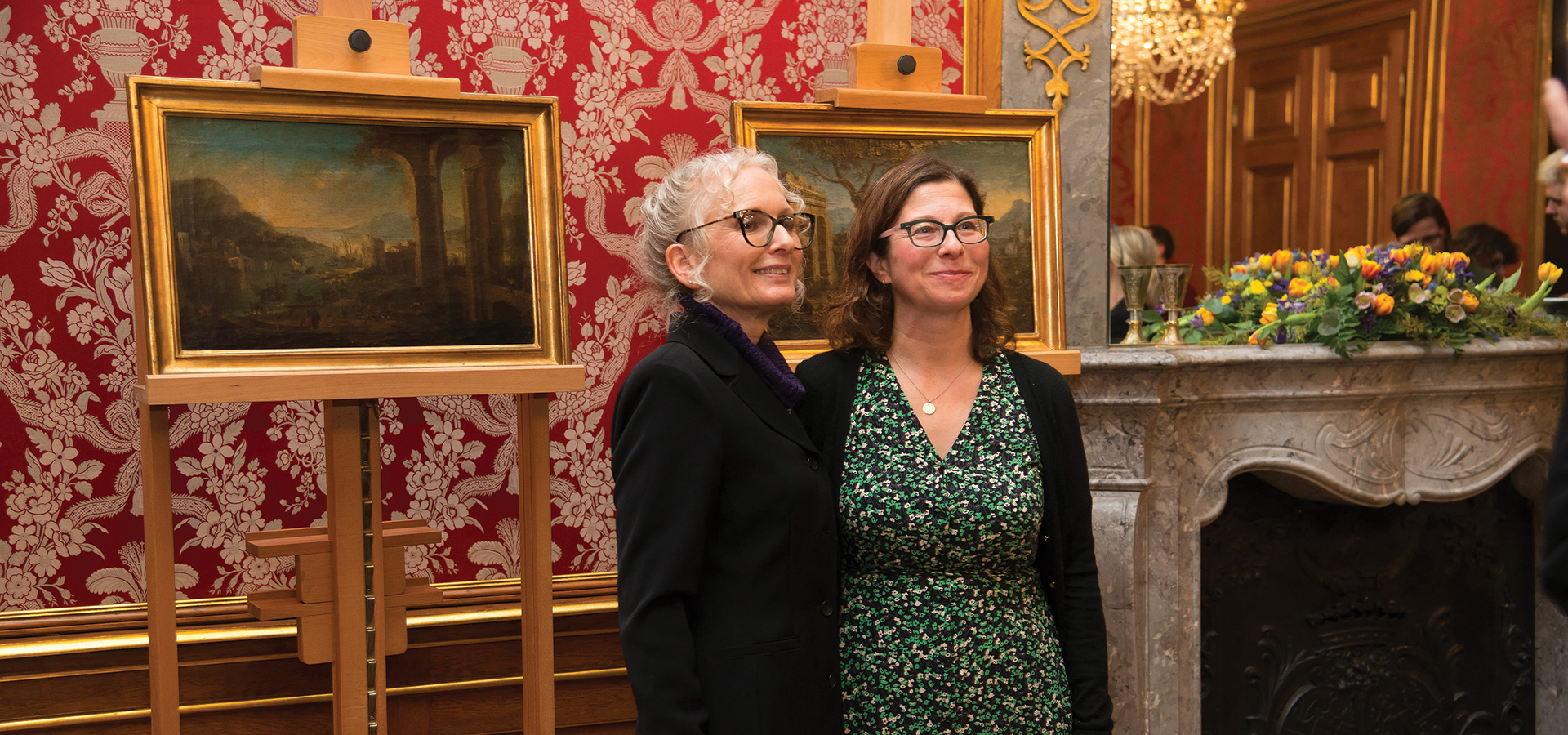
Above Cheryl Bernstein (right) with Rebecca Friedman of the New York State Holocaust Claims Processing Office.
•••
Despite repeated trips to Europe and claims filed with the Czech and German governments, none of the family treasures had been recovered at the time of Hedy’s death in 1997. It was not until 2020, with the help of New York State Department of Financial Services Holocaust Claims Processing Office, that the family finally recovered the painting when an attorney discovered it for sale at the Dorotheum auction house in Vienna.
Cheryl says the idea was never to keep the painting in her home, but to choose an institution that could share the reclamation story with others. “I like the Skirball because they honor the history and understand it on a deeper level,” Cheryl says. “You don’t have to be Jewish, but you have to be interested in the cultural side of it.” The painting is on a 20-year loan to the Skirball.
Cheryl adds that the search for the painting lent her insight into the character of her mother and her grandmother that she might otherwise have ignored. “My mother and I have always been close, but it really made me understand the generational trauma of going through a war.”
Grandmother Hedy, she says, was a stoic and a rebel in a way that was practically unheard of for a woman of the time. After coming to Los Angeles, Hedy, then a struggling single mother, worked as a bus driver, an apartment landlord, and in various other enterprises before landing as a quality control supervisor at Xerox.
“She was actually one of the first female drivers in Czechoslovakia,” Cheryl says. “She loved to tell the story about how she went for her driver’s license and literally had to open the engine and name every part of the engine. It shows that from a very young age she wasn’t afraid to step into a man’s world.”
Hedy also was not afraid to be blunt about her lack of maternal instinct. “She wasn’t raised to mother. Her children were raised with nannies and seamstresses and cooks and all that,” granddaughter Cheryl says. Cheryl jokes that when her grandmother became a bus driver for the Beverly Hills school district, she loved the driving but was less fond of the students who misbehaved on the bus.
There’s more to be discovered as Cheryl and mom Liz continue to share their stories. And curator Alissa, for one, is glad they’ve shared their history with the Skirball. “For me, what’s been most rewarding is seeing Liz, who’s in her late 80s, and Cheryl walk through the exhibition themselves,” Alissa shares. “They had family fly in from across the country and walked through together.
“I was able to take them through before it opened to the public, and just seeing the look on Liz’s face—Cheryl has said that she’s never felt closer to her mom. Spending so much time together and asking these questions of their past and has been just tremendously rewarding.”
Join the Valley Community






